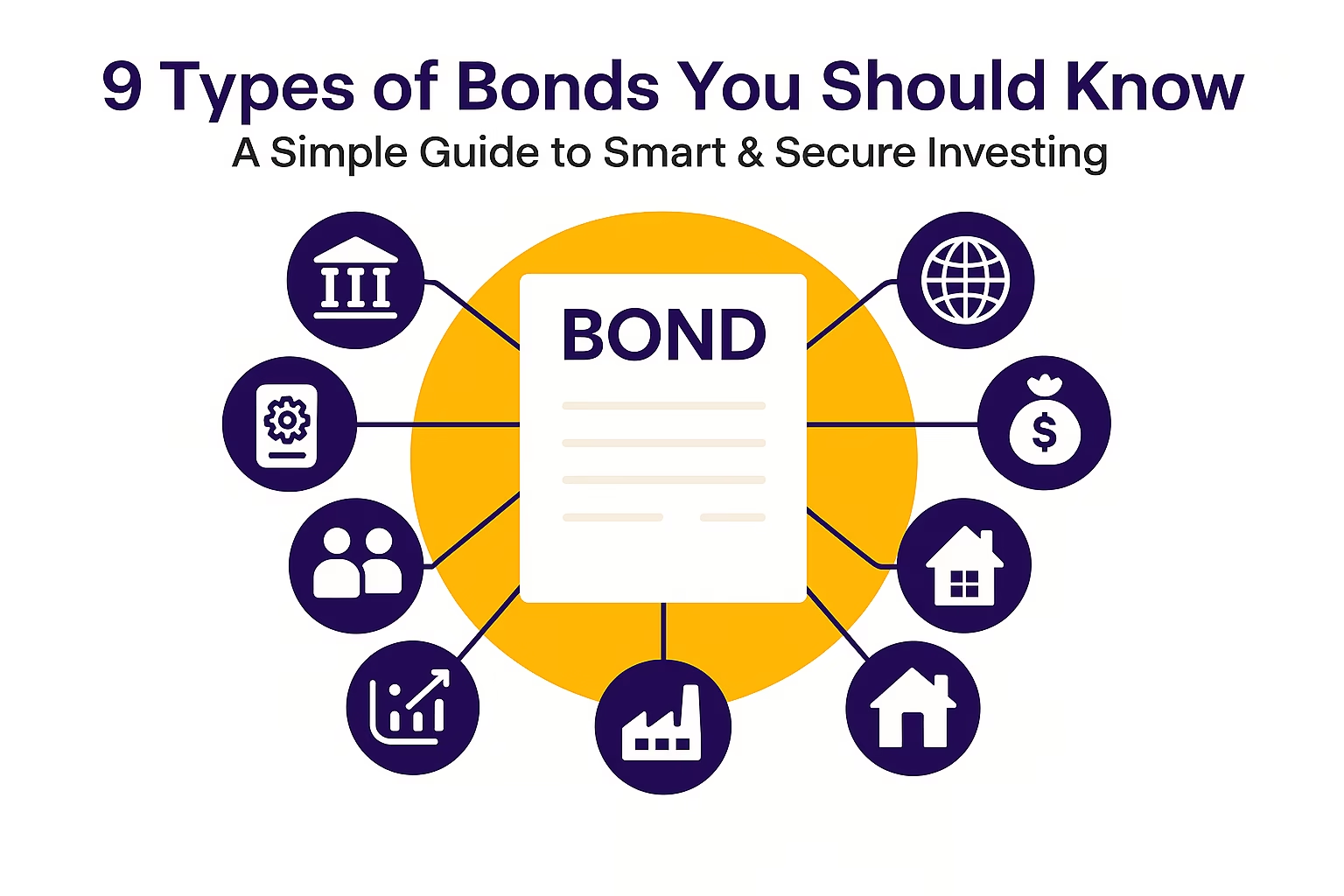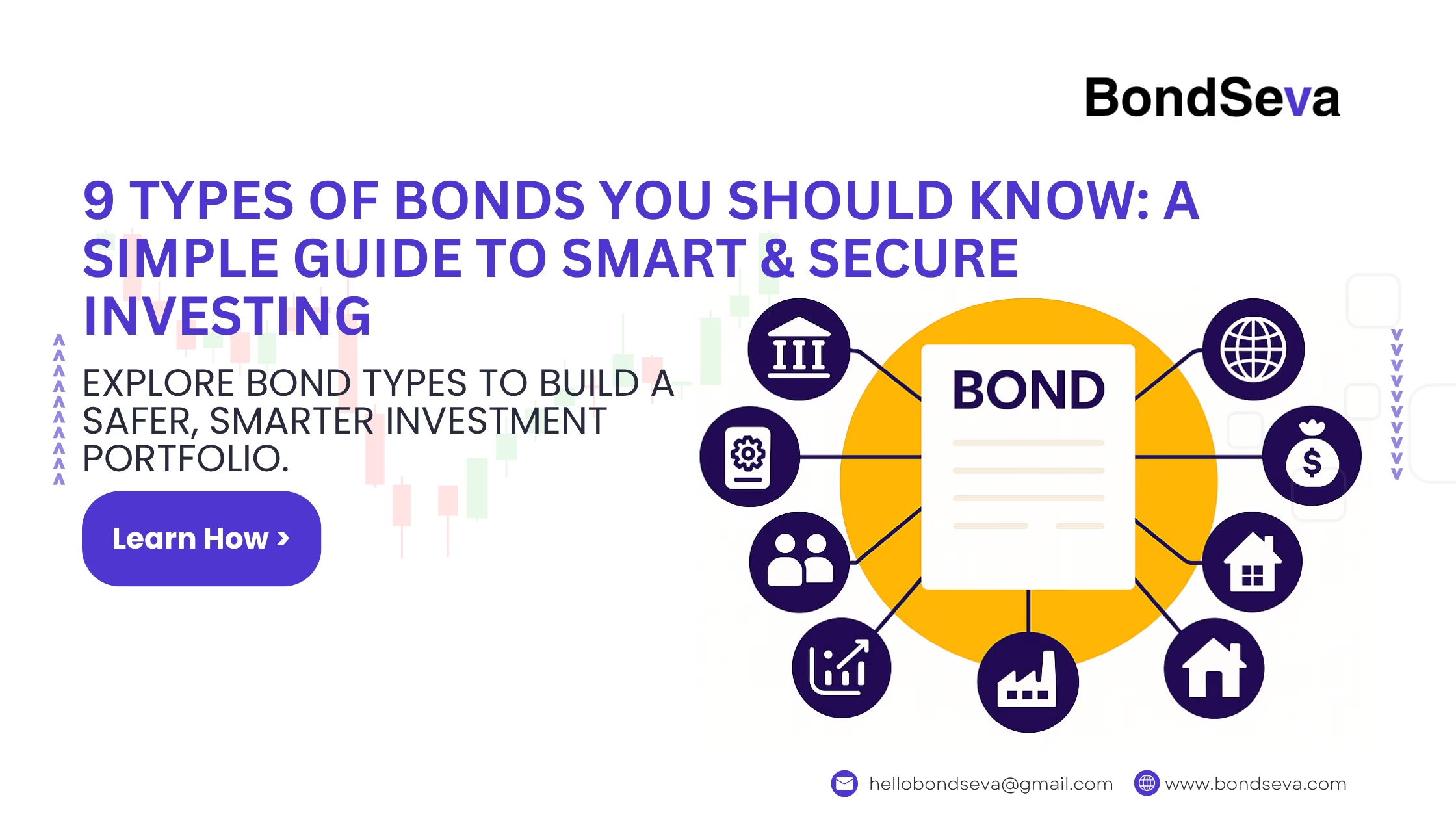If you are thinking about how governments, companies and institutions raise funds without diluting ownership? Discover what bonds are and easily explore different Types of Bonds. Learn how debt-based financial tools offer fixed income, low risk, and steady returns—ideal for smart, long-term investing.
What is a Bond?
My friend and I were both roaming around the garden when, after some time, he asked me a simple yet important question: “How do corporations, governments, and institutions raise money without giving away ownership?”
Although the question was straightforward, my friend isn’t from a finance background. I told him that they raise money through debt-based financial tools. That led to another question — “What is a bond? And how many types of bonds are there in the market?”
I explained to him that instruments are widely used in finance to generate funds, and they are among the most fundamental and widely used tools in the financial world. Bonds offer predictable fixed income, portfolio diversification, and are generally considered a low-risk investment compared to other asset classes.
Bonds are fixed-income securities that give us a fixed return and a predictable return. In simple terms, when you buy a bond, you lend money to the issuer (government, corporations, and institutions). In return, they promise to pay regular interest (known as a coupon) and, after maturity, repay the principal (known as face value). This predictable income and low risk make bonds more attractive.
There are dozens of different types of bonds present in the primary market and secondary market (if you want, we can explain the primary market and secondary market in depth — please comment on the site). Each has different features, benefits and risks.
By the end of the conversation, you will have a solid foundation about how many types of bonds there are, their features and all other things.
Types of Bonds

Now that we’ve covered the basics of what a bond is, let’s dive into the different types of bonds available in the primary market and secondary market. Each type of bond serves a different purpose, caters to different investment goals and different people. Whether you’re looking for safety, higher returns, inflation protection, or long-term income, there’s a bond type suited to your needs. Below are some of the most common and important types of bonds every investor should know, and this will help you to analyse the bond properly.
Government Bond
Government-issued securities are used to finance public spending and national obligations. These instruments pay investors periodic interest, commonly referred to as coupon payments. Backed by the central authority, they are considered low-risk. Often called sovereign debt, such offerings typically offer lower returns due to their stability and minimal default risk.
- Municipal: Local governments issue securities to fund local infrastructure, parks, and libraries. Municipal bonds give investors lower risk and lower return as compared to corporate securities.
- Treasury Bills: These are short-term securities held for less than one year. These securities are given at discounted face value, and they don’t give regular interest payments. Instead, the difference between the purchase value and face value is known as interest.
- Treasury Notes: These are medium-term maturity bonds (2–10 years). These securities pay interest on a semiannual basis and are popular for medium-term goals. Treasury notes typically have a face value of $1,000. However, at maturity, the face value of a bond is $5,000.
Corporate Bond
The investors who buy corporate securities are lending money to companies for their business operations. In return, the company promises to pay interest on the principal and, in most cases, at maturity, return the principal to the investors.
- High-Yield Bond: These securities have lower credit ratings. The probability of default is high in this type of bond. Because the risk is high that’s why the return is also high.
- Investment-grade Corporate Bond: Bonds issued by companies with high credit ratings, like AAA or BBB. These bonds are popular with conservative investors because the risk is lower in these securities compared to other corporate securities.
Fixed and Floating Rate Bond
- Fixed Rate Bond: At the issue time, this bond’s interest rate is decided, and its maturity is also decided. These securities provide investors with predictable income from the bond.
- Floating Rate Bond: This bond is vice versa of a fixed rate bond. The interest rate of this bond is not decided at issue time. Their return is decided on the benchmark return.
4. Convertible Bond
After a certain time, this bond is converted into company shares; that’s why these bonds are convertible.
- Semi-Convertible Bond: On this bond, some part of the face value is converted into company shares.
5. Zero-Coupon Bond
This bond doesn’t pay any interest at the time. We buy it at discounted face value, and after maturity, the difference between the purchase price and the face value is known as interest.
6. Callable and Puttable Bond
- Callable Bond: A Callable bond gives the issuer the right, but not the obligation, to redeem the bond before the maturity date. A callable bond is also known as a redeemable bond. Companies aim to reduce their interest obligation by having the flexibility to settle their debts before maturity.
- Puttable Bond: Puttable bonds are the reverse of callable bonds. They give the bondholder the right to sell the bond before the maturity date.
7. Inflation-Indexed Bond
Inflation-indexed bond is a government security issued by the national government. This bond offers protection against inflation (inflation means the value of things increases and the value of currency decreases). Inflation is a major concern for investors because inflation can affect the return of investors in some cases.
8. Perpetual Bond
A perpetual bond is a fixed-income security with no maturity. Example: if you invest your money in a perpetual bond like $1,000 and the coupon rate is 8% then you get $80 forever.
9. Green Bond
In the world, climate change is the real concern in front of us. To fund this problem, bonds are issued with fixed income.
Let’s Recap the Big Ideas
As you’ve seen, fixed-income investments aren’t boring — they’re a foundational part of the global economy. By participating in these instruments, you’re not just aiming for returns; you’re also supporting national and corporate growth.
When you invest, you’re essentially lending your money to governments, companies, or institutions. In return, they agree to pay interest and repay the principal amount at maturity.
There are various categories available — from sovereign and corporate options to treasury notes and more — each tailored to different investment needs.
Now it’s your turn: What are your financial goals? Are you seeking stable returns, safety, or diversification? There’s likely a fixed-income product that fits your objectives. And if you’d like us to break down these tools further, drop a comment. After all, money plays a vital role in our lives, and we’re here to guide you on your journey toward financial confidence.

